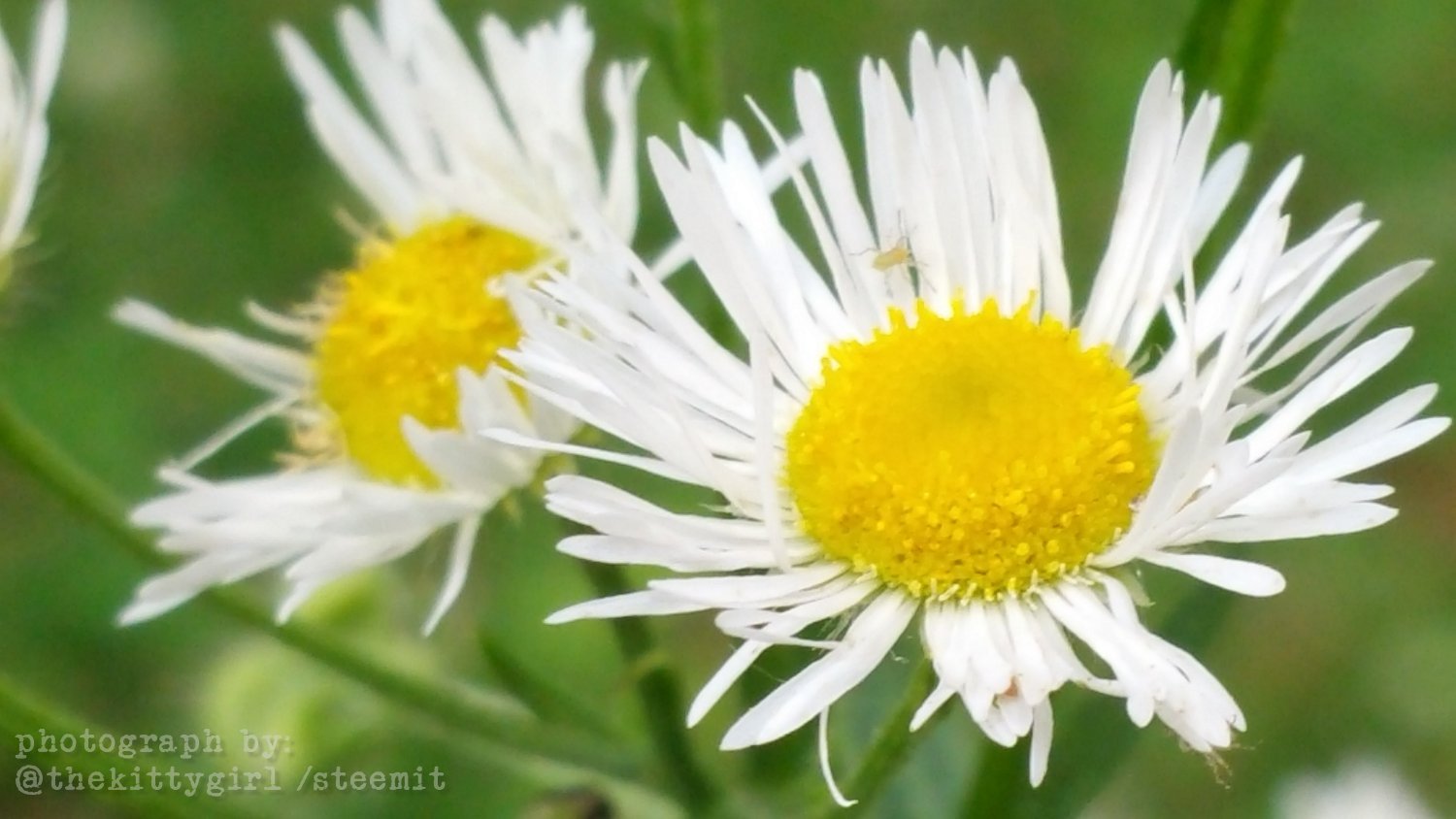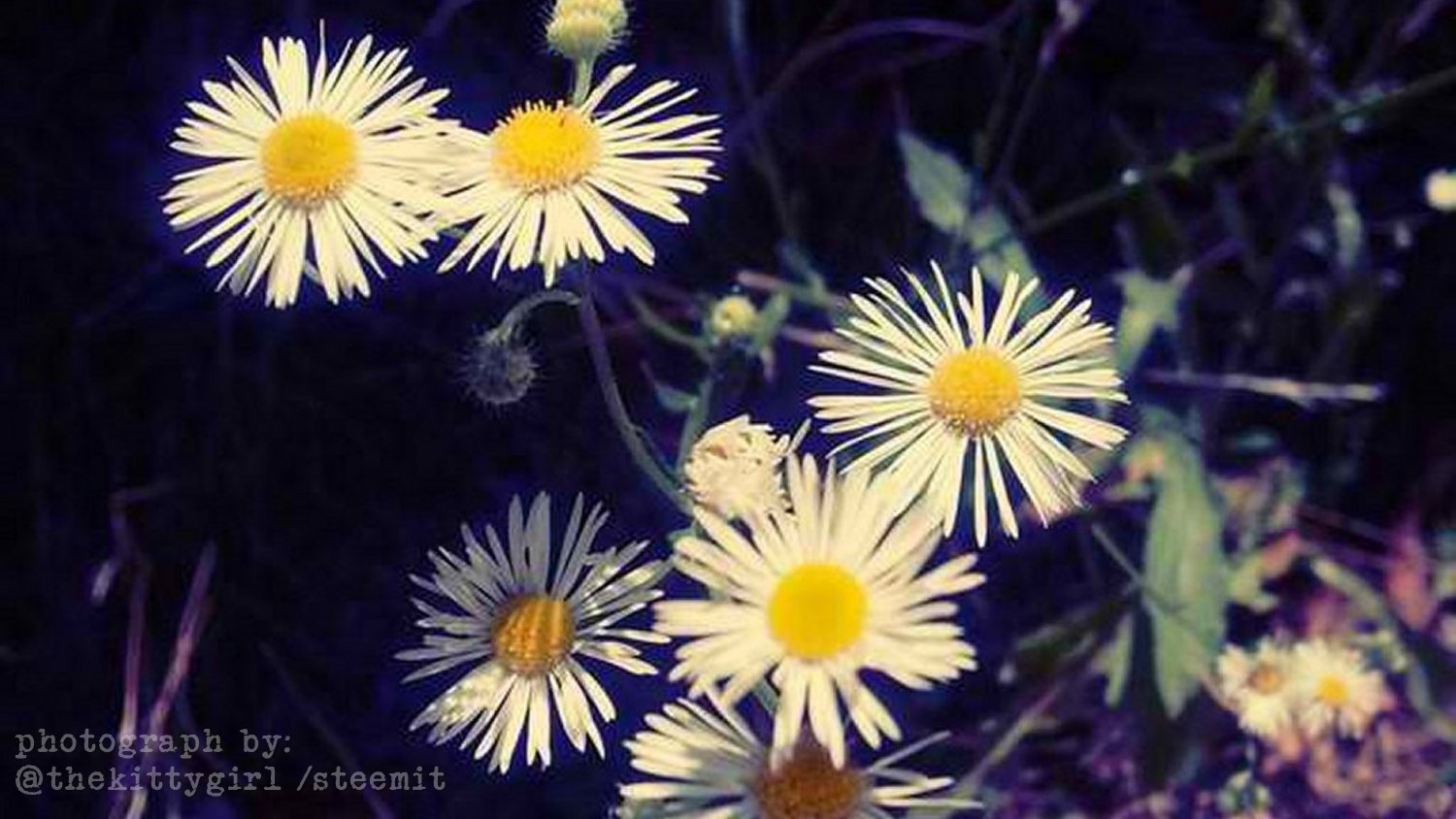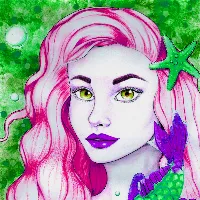The
Asteraceae family is the largest group of flowers, with 32,913 different species! Among this amazing group are the asters, the sunflowers, the daisies, and many others.
One of the sub-groups in this family is Fleabane, so called because it was thought to repel fleas. (I have not tested that theory... LOL!) I've seen these flowers for years and thought they were asters, and there is, indeed, some resemblance. For anyone interested, an aster and a fleabane flower are shown side-by-side on the Flickr page referenced in the "Sources" section at the end of this post.
One variety of Fleabane (Erigeron annuus) has made itself at home on the property lately. We didn't plant it, so it was probably spread by birds or an animal of some sort. The flowers are pretty, and resemble a small daisy.
• FLEABANE, PHOTO BY ME •
The flowers of Erigeron annuus are very small, ranging between ¼" (6mm) and ½" (12mm), with ⅜" (9mm) being average when fully open. If left unchecked, the stems of the plants grow tall — several of the plants are higher than my waist! The shot, below left, shows what the plants look like from a short distance away:

• PHOTOS BY ME •
The stems branch into panicles at the ends, capped by several flowers, as can be seen in the photos below:

• PHOTOS BY ME •
Many of the flowers in the Asteraceae family actually have what botanists call "composite" flower heads — in other words, what is commonly called the "flower" is actually a composite inflorescence of dozens, or hundreds, of teeny little "flowers" that are grouped together into what we perceive as a single flower. The "disc flowers" are called that because they grow from the disc of the flower head; the "ray flowers" extend outward like the rays of a stylized drawing of the sun. See the link in the Sources (at the end of this post) marked
"Asteraceae –Floral heads" for more information.

image: CC BY-SA 3.0 Alvesgaspar for Wikipedia
The "ray flowers" curl inward at night, and almost conceal the central yellow-portion of the flower head. The following photo shows that process partly underway, as daylight began to fade one evening. If one looks closely enough, there is a bug on the flower to the right — can you find it?

• PHOTO BY ME •
I really think these are delightful and fascinating little flowers!

• PHOTO BY ME •
A freebie!
I really like the first photo, at the top of this post, and think it turned out beautifully. In fact, I liked it so much that I turned it into a cheery "Get Well" graphic. If you like it, feel free to right-click and "Save As..." to use it elsewhere ~OR~ just copy the code that appears below the image, save it or paste it anywhere you wish the graphic image to appear on Steemit, Discord, or anywhere else! No attribution back to me is necessary.
https://cdn.steemitimages.com/DQmUpLMmntqfzcFYVgMUsYbgopch8s4131YHJBkCn2CA392/GetWellSoon.jpg
 😊
SOURCES
1 Flickr: Aster versus Fleabane
2 USDA.gov: Erigeron annuus
3 Wikipedia: Asteraceae –Floral heads
4 Wikipedia: Erigeron
5 Wikipedia: Erigeron annuus







Return from Fleabane to 𝕜𝕚𝕥𝕥𝕪's Web3 Blog
Fleabane was published on 12 Jun 2018 and last updated on 13 Jun 2018.





